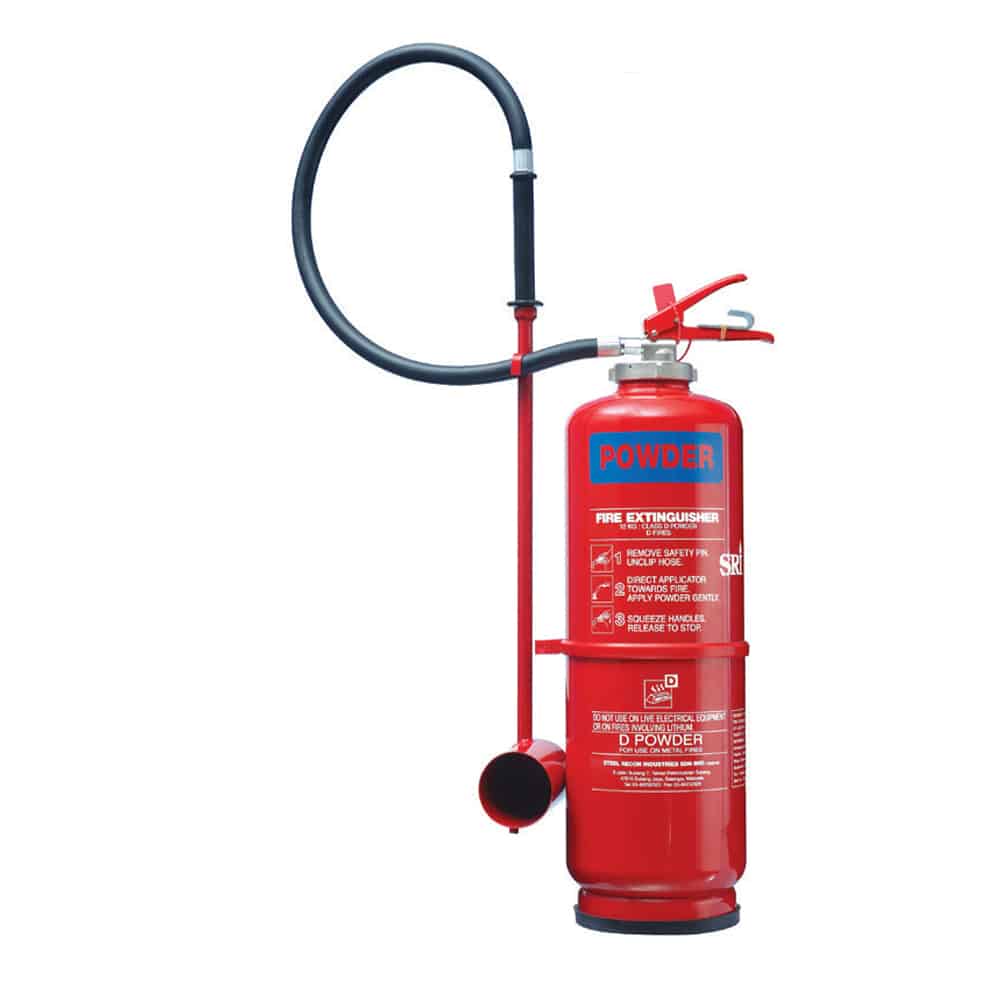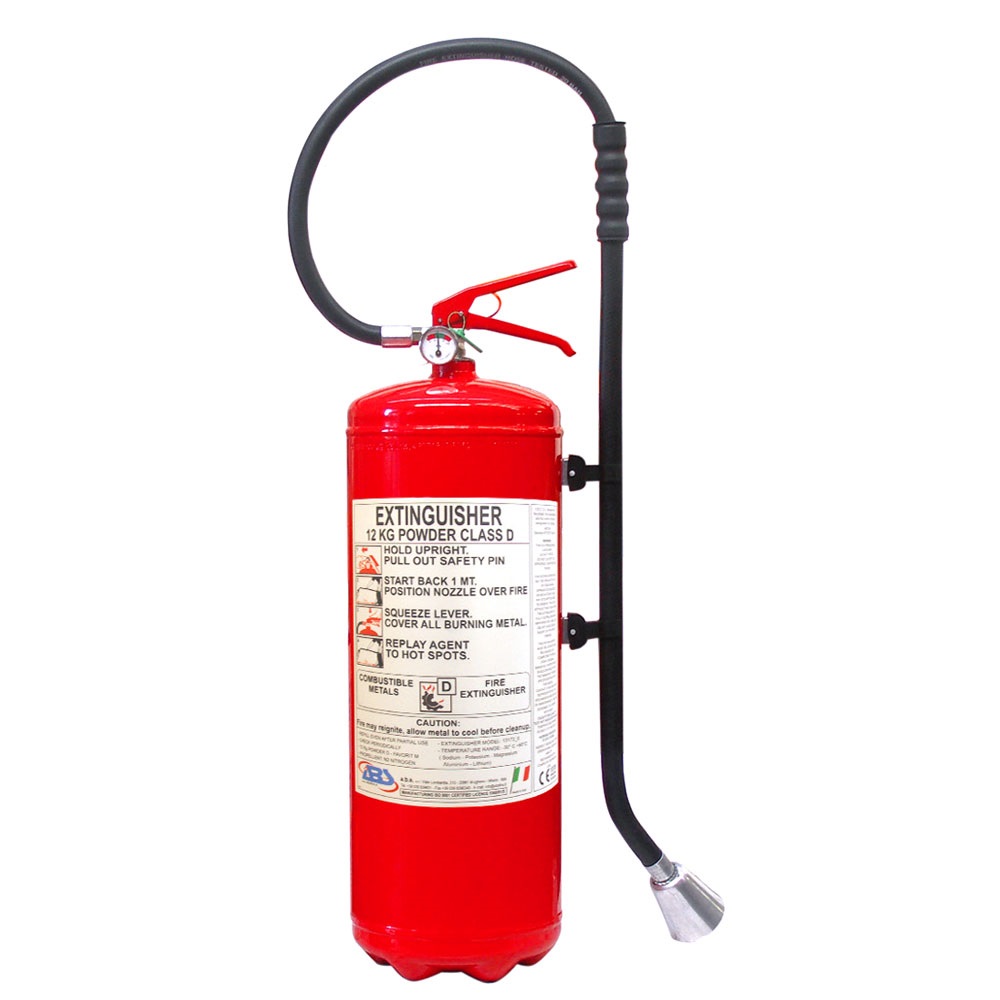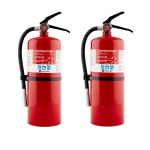Fires involving combustible metals, known as Class D fires, are a particularly dangerous category of fire that require specialized handling and extinguishing agents. These fires can occur in various industrial settings where metals like magnesium, titanium, sodium, or potassium are present. In this article, we will delve into the importance of Class D fire extinguishers, the characteristics of combustible metals, the different types of extinguishing agents, and essential safety protocols for dealing with Class D fires.
Understanding Class D Fires and Their Characteristics
Definition and Classification of Class D Fires
Class D fires are defined by the presence of combustible metals, which are metals capable of igniting and burning in their elemental forms. Often, these metals can combust spontaneously, meaning they can ignite without an external ignition source, particularly under high temperatures or when finely divided (like powder). Understanding this classification is crucial for effective fire response.
Common Types of Combustible Metals
Some of the most common combustible metals include magnesium, titanium, potassium, and sodium. Magnesium, for instance, is widely used in aerospace manufacturing due to its lightweight properties but can burn fiercely when ignited. Titanium, while being less reactive, can still pose serious fire risk, especially when in powdered or shredded form. Potassium and sodium are highly reactive with water, making them particularly hazardous in fire situations. Understanding the characteristics of these metals can provide critical insights necessary for firefighting procedures.

Importance of Class D Fire Extinguishers
Specialized Extinguishing Agents
Class D fire extinguishers are designed specifically for combating fires involving combustible metals. Unlike traditional extinguishers that use water or foam, Class D extinguishers utilize dry powder agents to smother the flames and cool the metal involved. This is essential because using water on combustible metal fires can lead to violent reactions, resulting in larger and more dangerous fires. The dry powder agents create a barrier between the metal and the oxygen in the air, effectively starving the fire of the necessary elements for combustion.
Risk Mitigation in Industrial Settings
In industrial settings such as metal fabrication factories, aerospace manufacturing plants, and recycling centers, the presence of combustible metals is common. Class D fire extinguishers are vital in minimizing risk and ensuring the safety of workers and property. The Occupational Safety and Health Administration (OSHA) emphasizes the importance of using appropriate extinguishing agents for different fire classes to prevent disastrous outcomes that can result in injury or loss of life.
Types of Class D Fire Extinguishers
Dry Powder Agents
The primary extinguishing agents utilized in Class D fire extinguishers are specialized dry powders, which can include sodium chloride (table salt), graphite, and other metal-specific powders. Each of these agents is tailored to react effectively with specific types of burning metals. For instance, sodium chloride can be effective with fires involving sodium as it disrupts the combustion reaction without exacerbating the fire.
Container Design and Specifications
Class D fire extinguishers come in designated containers that are often steel encased to withstand high temperatures and the reactive nature of burning metals. Typical specifications include a pressure rating that can handle higher operating pressures and unique nozzles designed to spread the dry powder uniformly over the fire source. Understanding the design specifics is crucial for proper use and effectiveness in emergency situations.
Steps to Safely Use a Class D Fire Extinguisher
Assessing the Situation
The first step in using a Class D fire extinguisher is assessing the situation. Before engaging with the fire, it is vital to determine whether the fire can safely approach. If the fire is too large or poses an immediate danger, evacuating the area and calling emergency services is the best response. Individuals should only attempt to extinguish small, manageable fires if they train and equipped to do so.
Proper Technique for Extinguishing Fires
Using a Class D fire extinguisher involves following specific techniques to ensure effectiveness. The PASS technique—Pull, Aim, Squeeze, Sweep—is adapted for Class D fire extinguishers by focusing on spreading the dry powder rather than spraying it. Users should aim at the base of the fire, using a steady sweeping motion to cover all burning materials thoroughly. It’s important to maintain a safe distance while applying the extinguishing agent.

Safety Protocols When Handling Combustible Metals
Protective Gear and Equipment
Safety is paramount when dealing with combustible metals and potential Class D fires. Personnel handling these metals should wear appropriate personal protective equipment (PPE), including flame-resistant clothing, gloves, safety goggles, and face shields. The proper gear not only safeguards against potential burns caused by splatter or sparks but also protects against inhalation of fumes released during a fire.
Emergency Response Planning
Every organization that works with combustible metals should establish a comprehensive emergency response plan specifically targeting Class D fires. This plan should outline the immediate steps to take in the event of a fire, including evacuation routes, designated assembly points, and communication protocols. Regular drills and training for personnel on the specific use of Class D fire extinguishers are also critical components of effective emergency preparedness.
Training and Awareness in the Workplace
Importance of Employee Training
Training staff in the recognition and response to Class D fires is essential to workplace safety. Employees should receive thorough training that covers the properties of combustible metals, the types of Class D extinguisher agents, and hands-on practice with extinguishing equipment. Regular refreshers should schedul to keep all staff members informed of changes in safety protocols or developments regarding combustible materials.
Promoting a Safety Culture
Establishing a culture of safety where employees feel encouraged to speak up about potential hazards can significantly reduce the risk of Class D fires. Open communication about safety concerns and hazards should foster, along with regular meetings to discuss best practices and updates on equipment and protocols. When employees involve in safety discussions, they become more aware and engaged, which can ultimately lead to more effective risk management.
Regulations and Standards for Class D Fire Safety
Overview of Regulatory Bodies
Various regulatory bodies, such as OSHA, the National Fire Protection Association (NFPA), and local fire codes, dictate safety standards surrounding combustible metals and Class D extinguishers. These organizations provide guidelines that cover everything from the correct types of extinguishers to use, to the proper training procedures required for employees handling these materials.
Compliance and Regular Inspections
Organizations must stay compliant with regulations regarding the storage and handling of combustible metals. Regular inspections of fire extinguishers, equipment, and training records should conduct to ensure all safety protocols are following rigorously. Any discrepancies or lapses should promptly address to maintain a high level of safety in the workplace.

Conclusion: The Importance of Preparedness and Awareness
In conclusion, Class D fire extinguishers are an essential aspect of safety measures for handling combustible metals in industrial settings. Understanding the unique risks associated with Class D fires, employing proper extinguishing techniques, and maintaining rigorous safety protocols are vital for the protection of employees and facilities. By fostering a culture of safety through training, equipment readiness, and compliance with regulations, organizations can significantly mitigate the risks associated with combustible metals and ensure a safer workplace for all. Preparation is key—staying informed about existing hazards and appropriate responses can mean the difference between a manageable incident and a catastrophic event.


